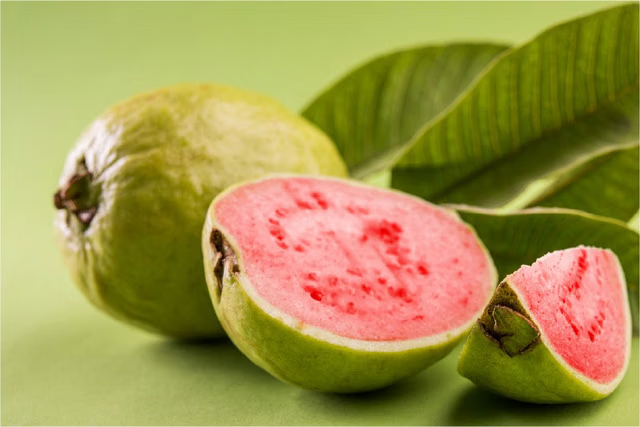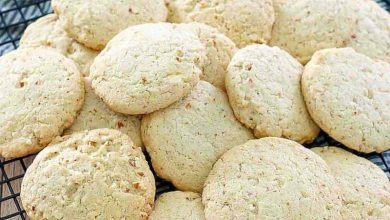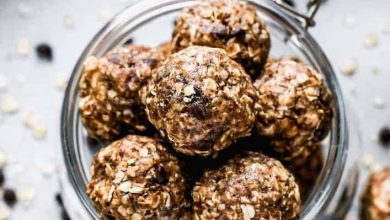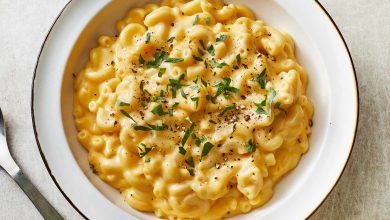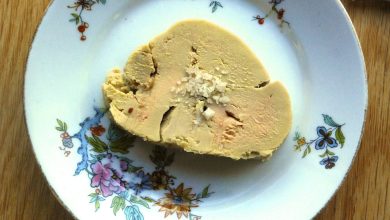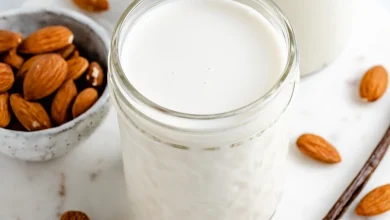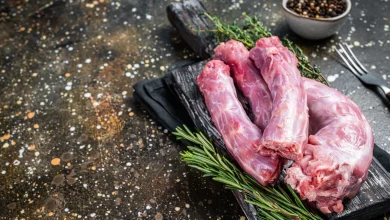Lamb Dom Leg (Whole, Shank, 14″ Fat, Choice, Cooked, Roasted)
Discover the rich, savory flavor of a tender, roasted lamb leg—ideal for hearty meals and special occasions. This cut of lamb, roasted to perfection, offers a balance of protein, healthy fats, and essential nutrients. With its deep flavor profile and succulent texture, lamb leg is an excellent choice for those looking to enjoy a nutrient-dense dish that pairs well with a variety of side dishes, from roasted vegetables to fresh salads.
Nutritional Information (per serving)
| Nutrient | Amount |
|---|---|
| Energy | 191 kcal |
| Protein | 28.3 g |
| Total Fat | 7.74 g |
| Saturated Fat | 2.76 g |
| Carbohydrates | 0.0 g |
| Dietary Fiber | 0.0 g |
| Sugars | 0.0 g |
| Calcium | 8.0 mg |
| Iron | 2.12 mg |
| Magnesium | 26.0 mg |
| Phosphorus | 206.0 mg |
| Potassium | 338.0 mg |
| Sodium | 68.0 mg |
| Zinc | 4.94 mg |
| Copper | 0.12 mcg |
| Manganese | 0.028 mg |
| Selenium | 30.1 mcg |
| Vitamin C | 0.0 mg |
| Thiamin (Vitamin B1) | 0.11 mg |
| Riboflavin (Vitamin B2) | 0.29 mg |
| Niacin (Vitamin B3) | 6.34 mg |
| Vitamin B6 | 0.17 mg |
| Folate (Vitamin B9) | 23.0 mcg |
| Vitamin B12 | 2.64 mcg |
| Vitamin A | 0.0 mcg |
| Vitamin E | 0.18 mg |
| Vitamin D2 | 0.1 mcg |
Allergen Information:
This dish contains no common allergens, making it a safe choice for many dietary preferences. However, if you have specific concerns regarding allergens, particularly in relation to cross-contamination, please be sure to check for any possible exposure in the preparation or serving environment.
Dietary Preferences:
- High-Protein: Ideal for those looking to increase their protein intake, especially beneficial for muscle repair and growth.
- Low-Carb: Perfect for low-carb and ketogenic diets, as it contains no carbohydrates or sugars.
- Gluten-Free: Naturally gluten-free, making it a suitable choice for those with gluten sensitivities or celiac disease.
- Paleo-Friendly: Lamb leg fits within the principles of a paleo diet, providing whole, unprocessed animal protein and fats.
- Low in Saturated Fat: Although lamb does contain some saturated fats, it is still a relatively lean source of protein compared to other meat options, offering a good balance of nutrients without excess fat.
Cooking Tips and Advice:
To achieve a perfect roast, ensure that the lamb leg is seasoned generously with herbs such as rosemary, garlic, and thyme before cooking. Roasting at a moderate temperature (around 375°F or 190°C) will allow the meat to cook evenly and retain its moisture, resulting in a tender and juicy roast. For extra flavor, you can sear the lamb in a hot pan for a few minutes on each side before roasting. This creates a delicious crust while sealing in the natural juices.
For best results, allow the lamb to rest for about 10-15 minutes after roasting to allow the juices to redistribute, ensuring a tender and flavorful slice with each serving.
Conclusion:
Lamb leg is a versatile and nutrient-rich choice for those looking for a hearty and satisfying meal. Whether served as a centerpiece at a family gathering or enjoyed as a protein-packed weeknight dinner, this cut of lamb provides essential nutrients, including high-quality protein, iron, zinc, and B vitamins, while remaining low in carbohydrates and sugar. Its rich flavor, tender texture, and nutritional benefits make it a beloved choice for many culinary traditions. Enjoy it roasted to perfection and paired with your favorite side dishes for a complete, satisfying meal.



